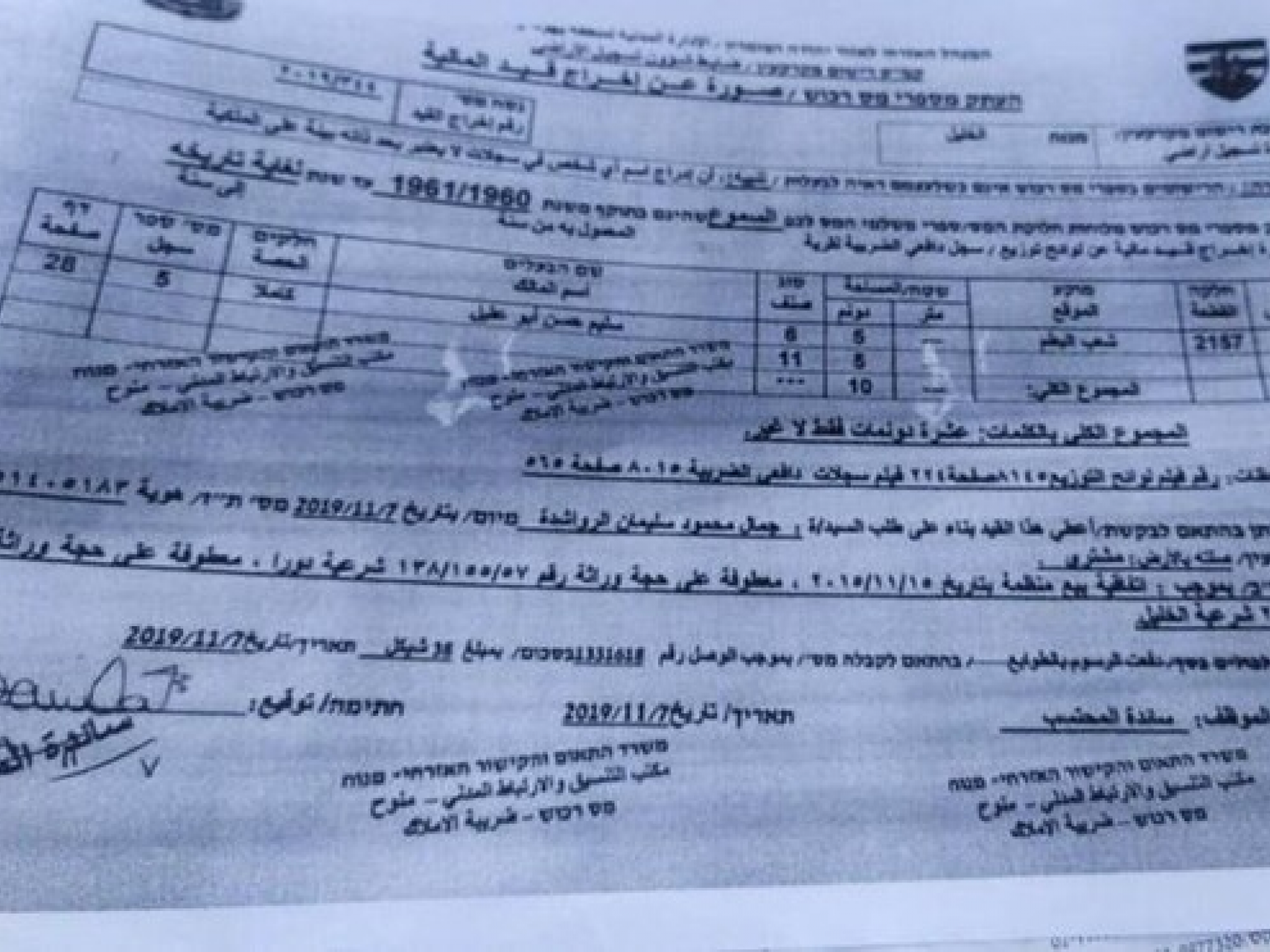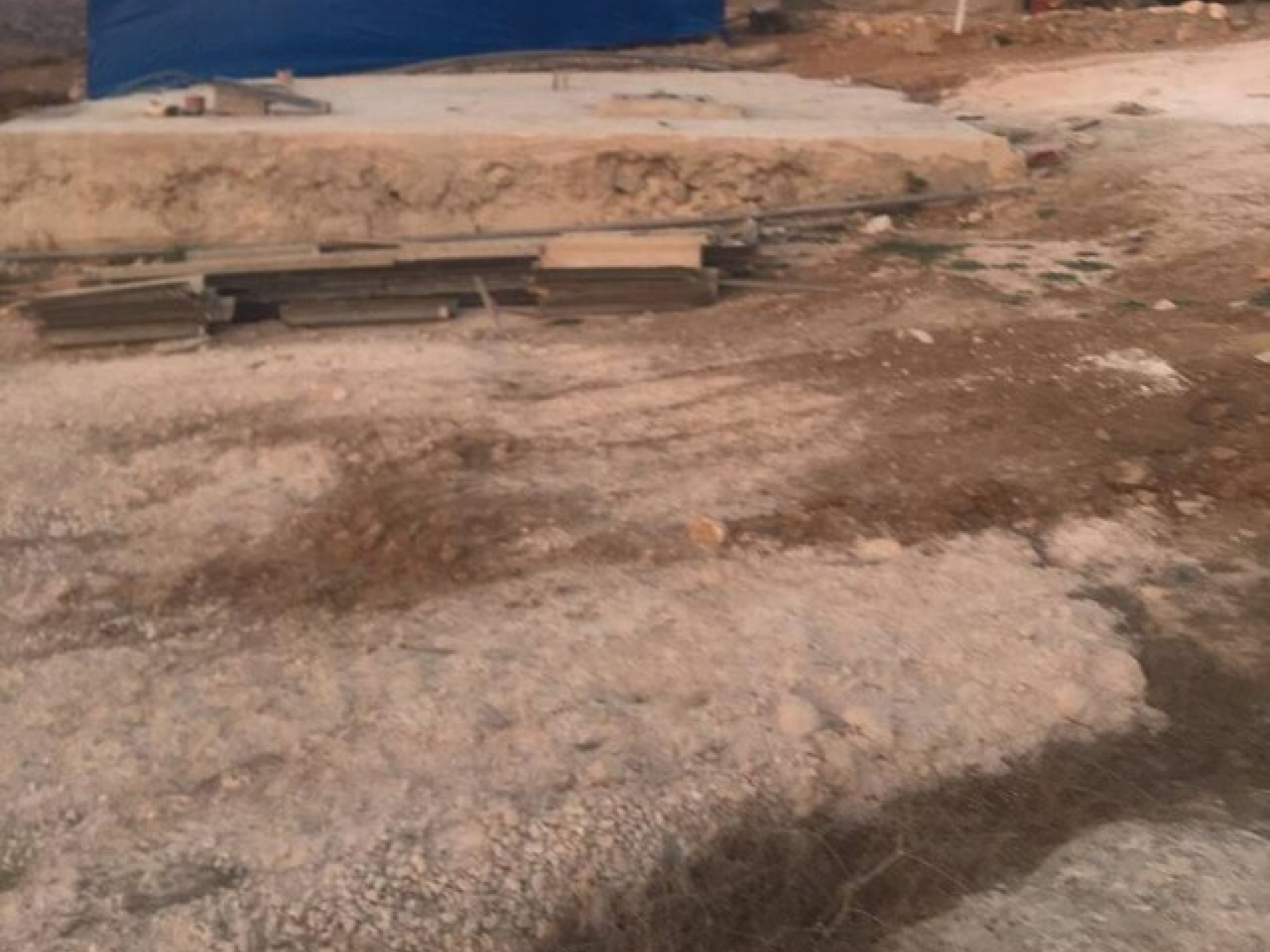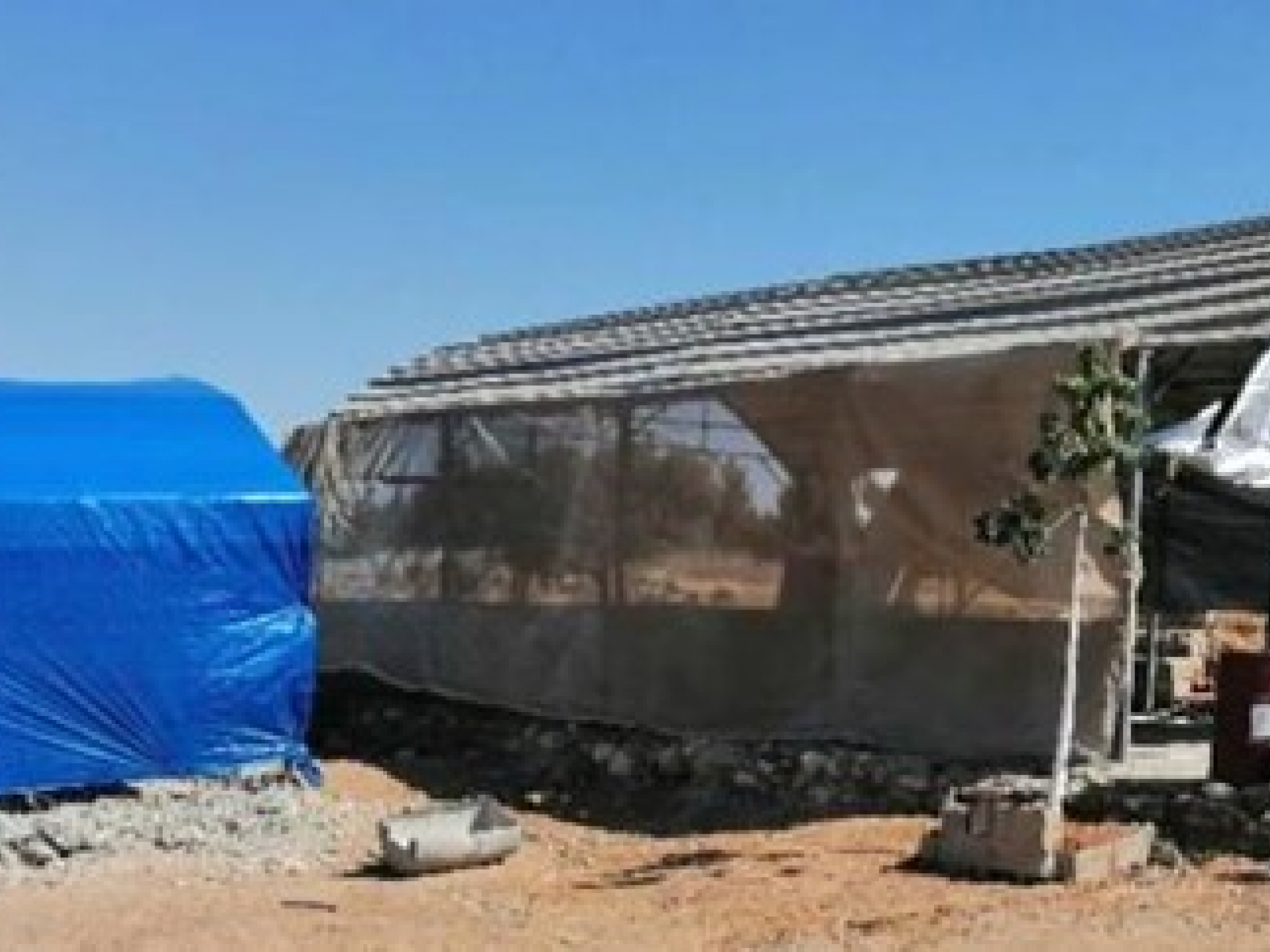South Hebron Hills
Jamal Rawashda, a resident of the village of Simia which crosses Route 60 in the section between the settlements Eshtamoa and Othniel, a farmer who works on plots east of the road, informed M. that today the authorities are supposed to come to carry out a demolition order for a building in his area, and asked that we be there between 8 and 9 in the morning to document the demolition. We arrived, and met a man who develops his plots professionally: a large water cistern built in the field, well-kept fields with an irrigation system, a modern area with a foal, goats with bells around their necks, and chickens of spectacular species, seedlings of various trees waiting to be planted within the plot, and a new structure for a greenhouse, plans for installing lighting along the dirt road leading to these plots. He has documents proving his ownership of these lands, including the map of the area, which he took care to take from the Etzion DCO, and paid for (Picture No 1).
About a year ago they came with an order that he should stop building his big cistern. He sent back the documents of ownership of his lands. After a few months he was informed that he could continue casting the pit but not beyond that (Photo No. 2, opening the pit from above, on the right we also saw a pipe that allows rainwater to flow down the slope).
Once two settlers entered his territory. He detained them until the army came and released them. He thinks they are the ones who reported on the further development in his area, the greenhouse structure seen here on the right (photo No. 3).
Jamal removed the plastic roof over the building, leaving only a nylon cover, hoping that maybe it would satisfy the authorities and they would destroy the whole building
An archaeologist (probably the Civil Administration 's Archeology officer) also arrived, claiming that even if the lands were in his possession, he was not allowed to build on them because it was an archeological site. He admits that there is archaeology in his area but demands that they come with the proper equipment to make sure exactly where this is under his land. He is willing to move but is angry that there is no real proof. Meanwhile, Jamal filed an appeal against the demolition order, with the help of a private lawyer from Jerusalem, Danny Cohen, in cooperation with an organization from Bethlehem. He is worried that with the boom in the building construction they will destroy the waterhole which he built at great expense. Also in preparing the fields he spent a large amount on bringing suitable ground. In the meantime he has lodged an appeal against the demolition order with the help ofc the lawyer.
's Archeology officer) also arrived, claiming that even if the lands were in his possession, he was not allowed to build on them because it was an archeological site. He admits that there is archaeology in his area but demands that they come with the proper equipment to make sure exactly where this is under his land. He is willing to move but is angry that there is no real proof. Meanwhile, Jamal filed an appeal against the demolition order, with the help of a private lawyer from Jerusalem, Danny Cohen, in cooperation with an organization from Bethlehem. He is worried that with the boom in the building construction they will destroy the waterhole which he built at great expense. Also in preparing the fields he spent a large amount on bringing suitable ground. In the meantime he has lodged an appeal against the demolition order with the help ofc the lawyer.
Farkhan, who lives on another part of the land at Simia on the other side of road 60 and on which is built the school that was destroyed (in the meantime the school is in a building which is in the village and so safer comes to visit. Time passes but those who are threatening with demolition do not come. So it is with the occupation. Time has no importance for them. Even if it means wasting a day of work. This is another example of abuse of the spirit. We part and Jamal will inform us of future developments.
Leaving the village on a dirt road , Ghaleb, the brother of Jamal, has a nursery of plants for home use. He has also been threatened with demolition and is on his way to the DCO to resolve the issue. This after waiting for an answer to no avail.
We went to see the synagogue at Samu', an old building which has not yet been excavated, to which, before the Corona, the settlers would arrive accompanied by the army. At the right is a mosque which has been renovated with the help of Belgium.



